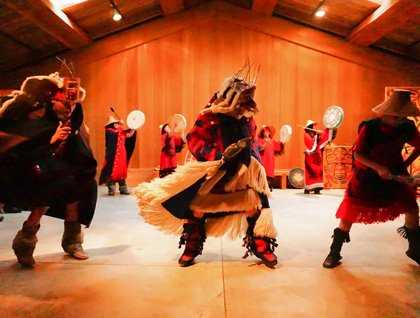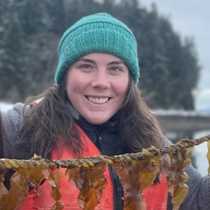Morning found the port of Prince Rupert shrouded in heavy fog. Sound and light disappeared quickly into absolute stillness. We left National Geographic Sea Lion and walked a short distance through the mist to the Museum of Northern British Columbia. The treasures of the Tsimshian we displayed and explained in context of the feast, or potlatch; the most important aspect of their culture. Immense bentwood boxes, sculpted spoons, and intricately woven dance regalia told of the accumulated wealth of chiefs.
We were divided into tribes, and then elected chiefs of our own. A short walk from the museum stood a longhouse, the meeting house of Tsimshian tribes for generations. In accordance with tradition, the chiefs lead their tribes into the longhouse for a presentation of feast dances by the Gwis’amihlgigoohl Dancers. The significance of every song and dance was explained, and they were performed with such gravity and sincerity that it was not hard to imagine being hosted at a three-day-long feast. The chief danced before us, scattering eagle down from his headdress with each nod of his head, spreading the sanctity of peace throughout the house. Ancient stories were told through dance and the use of stunning masks and regalia. Blankets whorled and spun while the drums and voices filled the house with ancient rhythms and words.
Exiting back out of the longhouse into the misty morning, we stepped back into modernity. With the songs of the Tsimshian fresh in our hearts and ears, we left Prince Rupert and voyaged further into the sheltered waterways of British Columbia and onwards to Haida Gwaii.







